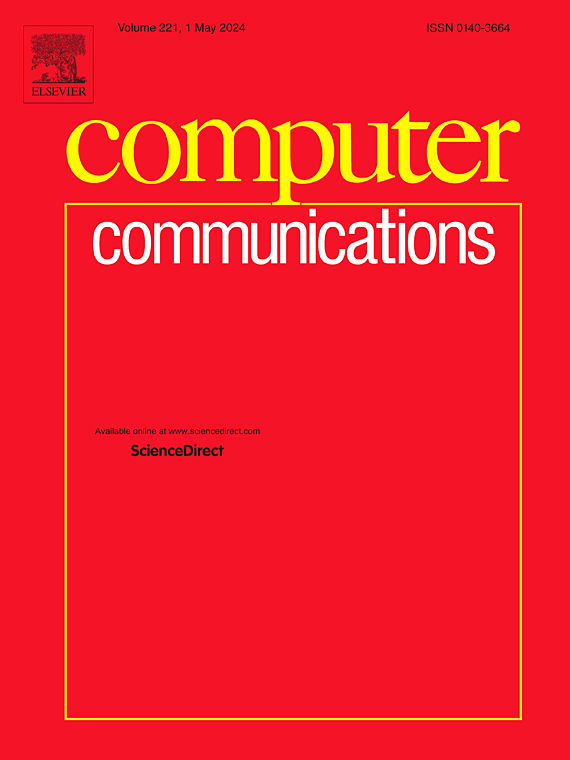AssociateChain: Scaling blockchain in cloud–edge-enabled Metaverse via associative sharding
IF 4.5
3区 计算机科学
Q1 COMPUTER SCIENCE, INFORMATION SYSTEMS
引用次数: 0
Abstract
Blockchain has been extensively employed to strengthen the security and privacy of cloud–edge-enabled Metaverse due to its immutability, decentralization, and other key characteristics. However, limited scalability remains a significant barrier to its broader adoption. Sharding offers a promising solution for scaling blockchain, but existing schemes perform state and node sharding separately, ignoring the fact that, in cloud–edge computing, end devices are typically serviced by the nearest edge nodes to achieve a high quality of service (QoS). We define this characteristic as device–edge proximity. As a result, device states may be assigned to distant edge node shards, requiring transactions to be relayed over the wide-area network before reaching their assigned shards, thus introducing additional relay overhead and increasing the overall transaction latency. To address this challenge, we propose AssociateChain, which employs a two-stage associative sharding approach to minimize number of relay transactions. In the first stage, device states are grouped into shards based on historical transaction patterns. In the second stage, the edge node sharding process is modeled as a stable matching problem, optimizing the assignment of edge nodes based on the first-stage results and device–edge proximity. Furthermore, we introduce a double-check mechanism to strengthen resilience against potential takeover attacks. Although AssociateChain slightly increases sharding complexity from to , where n is the number of nodes and k is the number of shards, experiments demonstrate that it reduces the relay transaction ratio by 90%, lowers relay delay by two orders of magnitude, and decreases total cost by 70%, significantly outperforming existing sharding schemes.
AssociateChain:通过关联分片在支持云边缘的Metaverse中扩展区块链
区块链由于其不变性、去中心化和其他关键特征而被广泛用于增强支持云边缘的元宇宙的安全性和隐私性。然而,有限的可扩展性仍然是其广泛采用的一个重大障碍。分片为扩展区块链提供了一个很有前途的解决方案,但现有方案分别执行状态和节点分片,忽略了这样一个事实:在云边缘计算中,终端设备通常由最近的边缘节点提供服务,以实现高质量的服务(QoS)。我们将此特性定义为设备边缘接近性。因此,设备状态可能被分配到遥远的边缘节点分片,要求事务在到达分配的分片之前通过广域网进行中继,从而引入额外的中继开销并增加总体事务延迟。为了解决这一挑战,我们提出了AssociateChain,它采用两阶段关联分片方法来最小化中继事务的数量。在第一阶段,根据历史事务模式将设备状态分组到分片中。在第二阶段,将边缘节点分片过程建模为一个稳定的匹配问题,基于第一阶段的结果和设备边缘接近度来优化边缘节点的分配。此外,我们引入了双重检查机制,以加强抵御潜在接管攻击的弹性。虽然AssociateChain将分片复杂度从0 (n)略微提高到O(k(n+1)),其中n为节点数,k为分片数,但实验表明,它将中继交易率降低了90%,中继延迟降低了两个数量级,总成本降低了70%,明显优于现有的分片方案。
本文章由计算机程序翻译,如有差异,请以英文原文为准。
求助全文
约1分钟内获得全文
求助全文
来源期刊

Computer Communications
工程技术-电信学
CiteScore
14.10
自引率
5.00%
发文量
397
审稿时长
66 days
期刊介绍:
Computer and Communications networks are key infrastructures of the information society with high socio-economic value as they contribute to the correct operations of many critical services (from healthcare to finance and transportation). Internet is the core of today''s computer-communication infrastructures. This has transformed the Internet, from a robust network for data transfer between computers, to a global, content-rich, communication and information system where contents are increasingly generated by the users, and distributed according to human social relations. Next-generation network technologies, architectures and protocols are therefore required to overcome the limitations of the legacy Internet and add new capabilities and services. The future Internet should be ubiquitous, secure, resilient, and closer to human communication paradigms.
Computer Communications is a peer-reviewed international journal that publishes high-quality scientific articles (both theory and practice) and survey papers covering all aspects of future computer communication networks (on all layers, except the physical layer), with a special attention to the evolution of the Internet architecture, protocols, services, and applications.
 求助内容:
求助内容: 应助结果提醒方式:
应助结果提醒方式:


